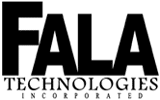| Founded in 1946 by Frank Falatyn, Sr. as Ulster Tool and Die, a family-run machine shop in Kingston, New York, FALA Technologies grew steadily throughout the decades, establishing a successful business in the 1970's and 80's by manufacturing highly precise machine parts for IBM and other companies. In the early 1990's, the company faced formidable challenges when IBM closed its Kingston campus and competition from low-cost, overseas production had seized FALA's market share. Ulster Tool and Die met these challenges by re-positioning itself to embrace emerging high technology markets. In 1996, the company changed its name to FALA Technologies and moved from a 13,000 to a 50,000 square foot, state-of-the-art building in Kingston, N.Y. The move coincided with the start of FALA's business transformation, which has allowed the company to succeed in a more highly competitive, global technology environment. Although much of FALA's floor space is dedicated to state-of-the-art manufacturing, the company has expanded its business and market focus from precision machining to the innovative engineering of advanced technology products and services for the semiconductor industry. Today, FALA distinguishes its market position by offering high-quality turnkey engineering and manufacturing services under one roof. FALA acts as a systems integrator, both by helping companies to develop their technologies into products and by merging divergent technologies into unified systems.. In 1999, FALA Technologies invented and introduced into the market what is now the leading product of its kind in the semiconductor equipment industry– Cleanroom-Grade Ceramic Hybrid Bearings. FALA's best-of-breed, ceramic bearings, used in advanced robotic handling for computer chip production, last four times as long as any competitor's product on the market and are now installed in leading semiconductor fabs worldwide. In 2004, FALA Technologies extended its leading bearing product from 200mm to 300mm to meet crucial requirements and to ensure the company's continued leading position in the market. In addition, FALA now exports its bearings, most notably, to the Asian marketplace. Although FALA's Cleanroom Grade Ceramic Bearings have achieved the leading market position, Fala has also rolled out since 1999 a series of other semiconductor equipment products, including Equipment Front End Modules (EFEMs), Class 1 Mini Environments, Wafer/Reticle Depodders, Reticle Shuffler/Sorters and Cleanroom Templates. Now, after years of FALA's continuous engineering and manufacturing efforts delivering various advanced technologies, advanced R&D organizations such as International Sematech and Albany Nanotech rely on FALA's leading edge scientific products on a daily basis to achieve their strategic goals – the advancement and development of next-generation semiconductor equipment. FALA has provided semiconductor material handling and support services to Albany Nanotech for years. Since its inception, International Sematech North, has regularly used FALA's mini-environment enclosures, reticle depodders and reticle sorters for ultra-clean product handling. FALA has also partnered with numerous semiconductor industry companies -- such as Zygo, Newport, Staubli, Asyst Technologies, Huntington Mechanical Laboratories, Aerotech and MKS Instruments -- to design and build one-of-a-kind, research and development equipment that advances Sematech's Extreme Ultraviolet Lithography (EUV) research program. Two such examples are the Reticle Transfer Metrology Tool—which examines EUV quartz, substrate blanks for flatness and surface features down to the sub-micron or nanometer inspection level in a sub-Class 1 clean environment. Another is the Defect Control Tool, used today in advanced studies to discover methods by which to decrease chip defects and increase product yield. Defect Control research has been identified as one of the major "road-map" technologies needed to advance next-generation semiconductor equipment development and processes. FALA has also distinguished itself at other world-class research and development centers – such as at the University of Minnesota Particle Technology Laboratory -- by facilitating groundbreaking research in advanced contamination studies. |

